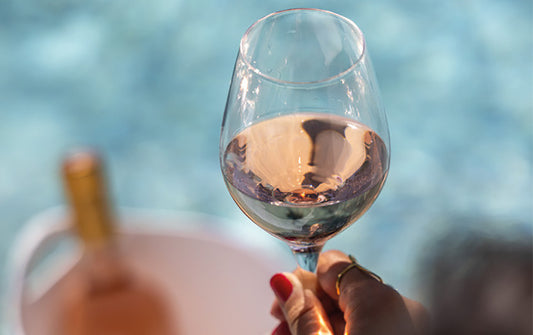With Memorial Day behind us, we are officially in rosé season, and while increasing numbers of us are drinking the pink stuff year round, if you are a firm adherent to the vinous calendar, it’s time to start thinking about what to fill your fridge with for the next three months.
For anyone who has been visiting Europe for decades, rosé has long been a staple of the dinner table in the summer. What’s surprising is the way that it has conquered the world in the past decade. What changed? A range of factors have been mentioned, including: social media, and Instagram in particular, where pictures of rosé elicit a torrent of likes; increasing consumption of rosé by men; rosé’s adaptability as a wine – it pairs easily with numerous types of food, and even adds colour to a cocktail.
A rising tide lifts all boats, and numerous regions have cashed in on the rosé boom beyond the traditional French regions. Rosato from Italy is increasingly recognised as a serious rosé category, particularly the fresh, smoky wines emerging from the slopes of Mount Etna in Sicily. Outside Europe, increasingly serious rosés in a range of styles are being made in California, but look for those made from unusual varieties. These can be juicy, playful wines, full of character and zest for life.
But rosé for many people will always mean France, and Provence in particular. Provence – that southern land of lavender, thyme and skies the colour of the bordering Mediterranean – has for generations produced the dry, pale rosés that are so au moment. In 2010, 123,000 cases of Provence rosé were imported to the United States; last year it was 2 million. American drinkers know a good thing when they see it. Because Provence rosés are delicious – a kiss of red fruits, a touch of apricot, a little herbal note creeping in, and a long, fresh, finish – it’s an irresistible proposition.
But a few observations to help us all drink Provence better. First, pale does not always mean better. Some lesser brands are chasing trends and producing wines as pale as possible – and they have just about as much character as they have colour. A good producer is far more important than a good colour. Second, youngest available is not always the best rule when selecting a vintage for Provence rosé, particularly the deep, structured wines from Bandol. If you can’t find a Bandol from 2016 or 2017, buy a case or two of 2018 from one of the best producers – our experts can tell you who – and forget them until next summer. You’ll be amazed how much they reward you. Finally, Provence rosé is a real wine and begs to be treated as such: serve chilled, but not ice cold; use good white wine glasses so the full scent emerges; and don’t be afraid to pair with even reasonably substantial foods.
There is plenty of rosé from elsewhere in France, including the structured Bordeaux style, or, a personal favourite, the rosés made from Pinot Noir – either from Sancerre or Burgundy, where the best rosé village is Marsannay. Pinot Noir is a variety with such a light touch that it is a natural choice for rosé production: the silky texture and delicate red fruit character are a deliciously tempting combination. But whatever rosés you choose this summer, drink what you enjoy and relax. ‘Tis the season, after all.
- Nick Jackson, MW | A Master of Wine with 10 years’ experience buying and selling the world’s finest wines. As of 2019, there are 384 Masters of Wine worldwide, and 52 in the USA. Nick lives in New York City.





